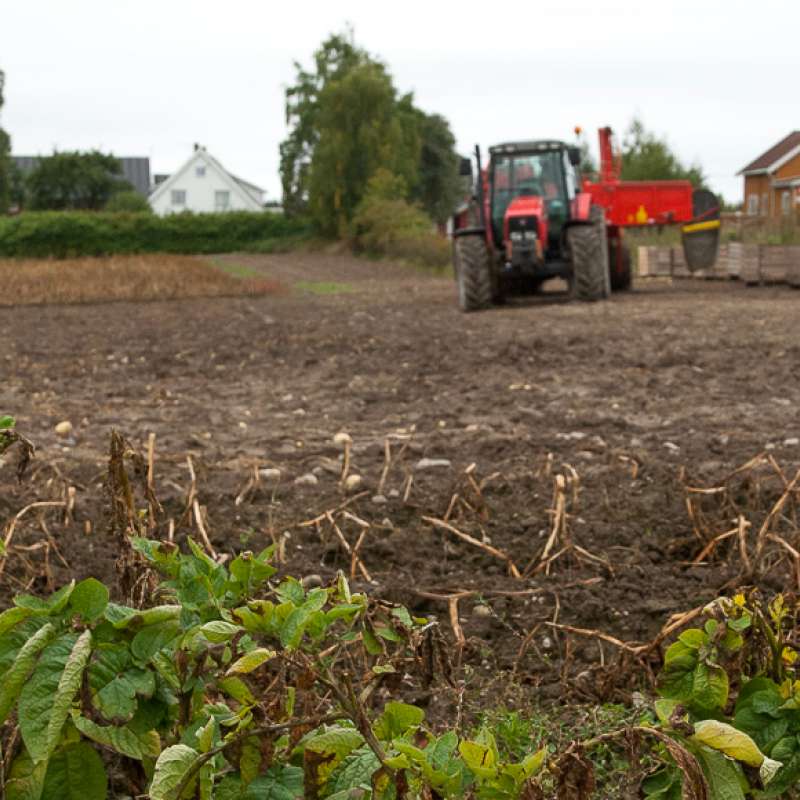Wiktoria Kaczmarek-Derda
Forsker
(+47) 920 12 897
wiktoria.kaczmarek@nibio.no
Sted
Ås - Bygg H7
Besøksadresse
Høgskoleveien 7, 1433 Ås
Biografi
Jeg jobber med biologi og bekjempelse av ugras knyttet til:
- grasmark
- fôrvekster
- plenarealer relatert til grøntanlegg (inkludert golf)
- frukt og bær
I tillegg jobber jeg med fremmede invaderende plantearter og herbicidresistens hos ugras.
Sammendrag
Weed management in the apple orchard is crucial to maintain a high fruit yield and quality. Glyphosate applied twice is the usual strategy in apple orchards in Norway. Due to a recurring debate about the future of glyphosate use and a target in the Farm to Fork strategy of a 50% reduction in pesticide use by 2030, alternative solutions are needed. Two field trials conducted in 2023 in orchards (two- and eleven-year-old trees) are presented here. Six alternative strategies were tested: 1) hot water at 3 L m-2 x 3 (spring, early summer, summer), 2) hot water at 6 L m-2 x 3 (times as previous), 3) pelargonic acid at full dose (10.9 kg a.s. ha-1) x 2 (early summer, summer), 4) pelargonic acid at half dose (5.44 kg a.s. ha-1) x 2 (spring, summer), 5) acetic acid 10% at 25 kg a.s. ha-1 x 2 (early summer, summer) and 6) rotary hoe x 3 (spring, early summer, summer). Glyphosate at 1.08 kg a.s. ha-1 x 2 (early summer, summer) was included as a reference strategy. Hot water (±80 C, 0.1 bar) was applied with a commercial machine (Heatweed Technologies, Norway). For mechanical treatment “Orizzonti Mira” rotary hoe was used. Dry biomass and visual assessments of a percentage of ground covered by living vegetation were used to estimate weed control efficacy. Dominating species were Epilobium sp., Taraxacum officinale, Rumex longifolius in both fields, Aegopodium podagraria and Senecio vulgaris in the two-year-old field and Geranium sp. in the eleven-year-old field. Visual assessed in mid-July, i.e. about 3 weeks after the last application of the treatments, 3 hot water strategies with 6 L m-2 resulted in the highest level of weed control, i.e. 6 and 9% total weed cover in the eleven-year-old field and the two-year-old field, respectively. 3 L m-2 resulted in 16% and 20% total weed cover in the two-year-old field and the eleven-year-old field, respectively. This was better than the glyphosate strategy (23% and 55% total weed cover in eleven-year-old field and two-year-old field, respectively) and much better than pelargonic acid (both treatments), acetic acid 10% and rotary hoe strategy. The results of these trials showed very good efficacy of hot water, especially against annual weeds. No significant benefit of doubling hot water from 3 to 6 L ha L ha-1. Dry biomass was in the same order as visual assessments.
Forfattere
Wiktoria Kaczmarek-DerdaSammendrag
Det er ikke registrert sammendrag
Sammendrag
Det er ikke registrert sammendrag

Divisjon for bioteknologi og plantehelse
SOLUTIONS: New solutions for potato canopy desiccation, control of weeds and runners in field strawberries & weed control in apple orchards
Efficient measures for weed control and similar challenges are vital to avoid crop loss in agriculture. National supply of food, feed and other agricultural products depends on each farmer’s success managing their fields and orchards. The recent loss of the herbicide diquat, and the potential ban on glyphosate, - both important tools for farmers -, raise a demand for new measures for vegetation control. Efficient alternatives to herbicides are also important tools in Integrated Pest Management (IPM). Norwegian growers need to document compliance to IPM since 2015 to ensure minimum hazards to health and environment from pesticide use.

Divisjon for bioteknologi og plantehelse
Ugras eller kulturplanter -vinneren av klimaendringene
Dette prosjekt undersøker effektene av klimaendring på konkurranse mellom ugras- og kulturplanter og vil gi oss viktig kunnskap for å kunne utvikle tilpassede strategier i møte med et klima i endring.

Divisjon for bioteknologi og plantehelse
Weeds vs. Crops: the winner of climate change
This project investigates the effects of climate change on competition between weeds and crops and will provide essential knowledge for developing adaptation strategies in the face of a changing climate.

Divisjon for bioteknologi og plantehelse
SOLUTIONS: Nye løsninger for nedvisning av potetris, bekjempelse av ugras og utløpere i jordbær og ugraskontroll i eplehager
Håndtering av ugress og andre plantevernutfordringer er viktig for å unngå avlingstap i landbruket. Tilbudet av norske rå-, mat- og fôrvarer påvirkes av at bonden lykkes med sin innsats i åker og frukthager. Et nylig forbud mot plantevernmiddelet dikvat og den usikre framtida til glyfosat – begge viktige innsatsfaktorer i norsk jord- og hagebruk – fordrer nye løsninger. Gode alternativ til ordinære plantevernmidler er dessuten velkomne som verktøy i integrert plantevern (IPV). Norske dyrkere er siden 2015 pålagt å følge IPV. Hensikten med IPV er blant annet redusert risiko ved bruk av plantevernmidler på helse og miljø.
